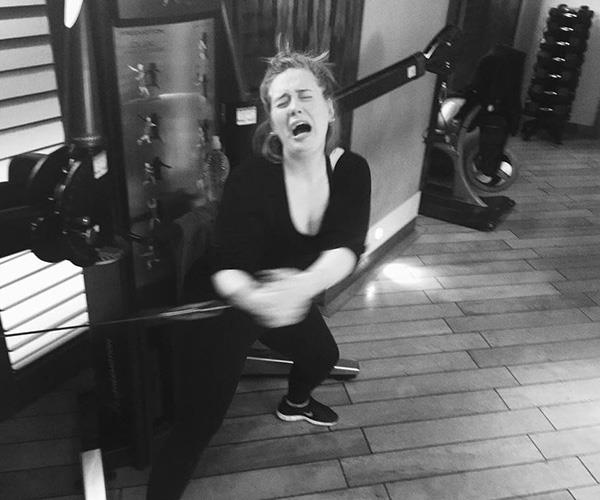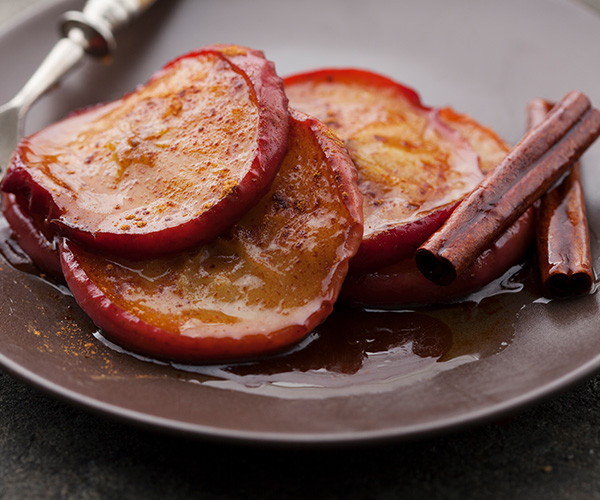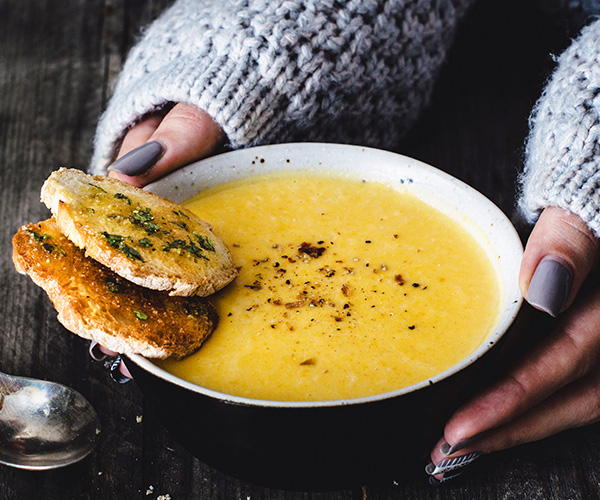As humans, our bodies have evolved with the seasons to eat heavily in the harvest season (autumn) and keep weight on in the winter to protect from the cold and lack of food. We naturally crave warm foods and the fats to protect our organs and skin from wild winds, cooler temperatures and less sunlight.
There’s no question it’s easier to make healthy choices in summer – there’s an abundance of produce in season, the sun is shining, the days are long – and we feel naturally motivated to head outdoors and get active.
But come the colder, dreary months of winter, eating clean and slimming down can seem a lot more challenging. With shorter, darker days, winter is enough to derail our motivation to exercise, too.
A recent discovery may explain one reason for winter weight gain. A January 2018 study by University of Alberta researchers has shown the fat cells that lie just beneath our skin shrink when exposed to the blue light emitted by the sun.
“When the sun’s blue light wavelengths – the light we can see with our eye – penetrate our skin and reach the fat cells just beneath, lipid droplets reduce in size and are released out of the cell. In other words, our cells don’t store as much fat,” says Peter Light, senior author of the study.
“If you flip our findings around, the insufficient sunlight exposure we get eight months of the year may be promoting fat storage and contribute to the typical weight gain some of us have over winter. Perhaps that pathway – exposure to sunlight that directs our sleep-wake patterns – may also act in a sensory manner, setting the amount of fat humans burn depending on the season. You gain weight in the winter, and then burn it off in the summer.”

Fat cells that lie just beneath our skin shrink when exposed to the blue light emitted by the sun.
(Image: Getty Images)Peter adds, “This could be evolutionary process, supported by the fact that unlike many other mammals, our fat is spread out all over our bodies.”
If forgiving winter clothes and unforgiving temperatures aren’t motivating you to work toward your winter weight-loss goals, don’t fret – we’ve rounded up the best tips and tricks for dealing with cold temperatures and comfort food cravings, and stay on track through the winter months.

If you need some health and fitness motivation this winter, read on!
(Image: Instagram @adele)1. Eat winter produce
It’s the season for comfort foods and temptation is everywhere, but opt for seasonal, local foods that grow close to home.
For most of us that means eating more dense root vegetables, hearty winter greens, and quality animal products. Low-calorie foods such as kale, broccoli and Brussels sprouts contain so much filling fibre that you won’t have room to overeat higher-calorie foods after loading your plate with these seasonal ingredients.
So long as the broccoli isn’t drenched in cheesy sauce, filling up on winter’s best foods will benefit your body.
2. Focus on good fats
When cooking, opt for monounsaturated fats (nuts, olive oil and avocados), and polyunsaturated fats (walnuts, fish such as salmon, mackerel and herring, and sunflower seeds), but avoid hydrogenated and trans fats, which lurk in processed foods.
Did you know that avocados are about 77 percent fat and contain about 40 percent more potassium than bananas?
WATCH: Seven ways to eat avocado. Post continues after video…
3. Work out at home
There’s nothing worse than feeling cold, and winter weather can be a major deterrent from going to the gym. Who wants to venture out for a run when it’s so cosy at home?!
Luckily, you don’t have to leave the comfort of your living room to get in a killer sweat session and still remain #fitspo when fighting the urge to hibernate. There are tons of great online workout videos – everything from yoga to dance cardio or HIIT.
“You can put a couple together or split them up, with 10 minutes before work and 10 minutes at night,” says health and lifestyle coach Sheila Viers.
4. Reach for healthy sugars
It’s no secret that we crave a little sweetness when the temperatures start to cool.
Even in winter nature comes to the rescue with high-nutrient, seasonal vegetables to give you the sweet taste you desire – beetroot, sweet potato, and pumpkins are great for their vitamins and mild natural sweetness, and will help you resist sugar’s temptation.
Don’t forget about warm fruits either – they can be a delicious and healthy winter treat. You can bake or roast apples, bananas or pears and eat with a drizzle of honey or a sprinkle of cinnamon.

Baked apples with cinnamon make a delicious and healthy winter treat.
(Image: Getty Images)5. Drink cold water
Good news if you drink your water cold, regardless of the season!
When you consume liquids that are colder than your core body temperature, your body has to work to warm it up, and it burns extra calories in the process, according to a 2003 study on the metabolic effects of different water temperature published in The Journal of Clinical Endocrinology & Metabolism.
6. Sleep more
When the weather’s cold and the days are short, human bodies return to the natural, evolved state of slow metabolism and more sleep.
Get more sleep during the early, dark evening hours, and wake up earlier to catch every ray of sunlight possible. When you wake up early and get more morning sunlight, it has a positive effect on your sleep cycle. More sleep, especially in winter, also stops you from late-night snacking.

Any excuse for an early bed time!
(Image: Getty Images)7. Bundle up
Those bulky, restricting layers might weigh you down and make it extra hard to move, but they also amp up the intensity of every step you take.
So simply dressing for cooler weather helps your resistance and strength training without even stepping foot in the gym.
8. Choose soup as an entrée
Studies have repeatedly shown that when a meal includes a soup or salad, we consume up to 100 fewer calories per meal.
The winter staple takes up so much room in our stomach that it literally fills us up, so we end up eating fewer calories overall when we eat it at the onset of a meal, according to a 2007 Penn State University study.
Because cream-based soups tend to be more calorically dense than broth-based options, opt for the latter to max out on this benefit. A mineral and nutrient-rich warming broth is also great for extra energy.

Opt for a broth-based soup to start off your meal.
(Image: Getty Images)9. Order in vs dining out
People tend to choose lower-calorie meals when they order their food an hour or more before eating (to account for the time it takes for food delivery) as opposed to ordering right before mealtime (while sitting in a restaurant), according to a 2016 study published in the Journal of Marketing Research. So it’s a good thing you didn’t feel like leaving home anyway!
10. Treat yourself!
We all love a chocolatey treat from time to time, and why not? We deserve it! But instead of reaching for a sugar-loaded chocolate bar, instead try one of the new Atkins Caramel Nougat bars.
This delicious bar combines gooey caramel and soft nougat with a thick layer of milk chocolate, and all with only 1.4g of sugar. With Atkins bars, you can satisfy your chocolate cravings any time of day and still maintain your healthy, low-sugar lifestyle. Available from Woolworths, Catch of the Day and selected pharmacies.
These Atkins bars that contain just 1.4g of sugar are the perfect treat!
(Image: Supplied)11. Embrace the cold weather
Whether you’re walking the dog outdoors or running to the bus stop, simply exposing yourself to cold temperatures can encourage white body fat – the kind that stores calories – to act more like brown fat, the kind that generates heat by burning calories, according to a 2015 study published in The FASEB Journal.
Just make sure you’re not exposing yourself to too much cold, obviously!

